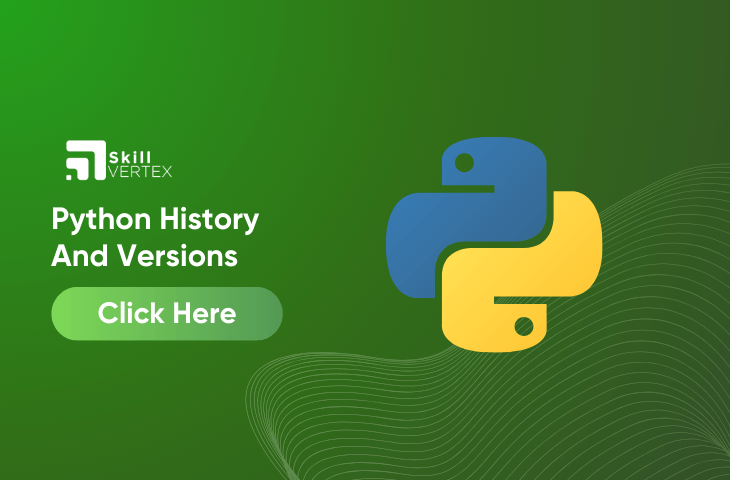Table of Contents
Python -History
Python was taken from many other languages such as ABC, Modula-3, C, C++, Algol-68, SmallTalk Unix shell, and several other scripted languages. This article is about Python history and versions
What is the History Of Python?
Python was created by Guido Van Rossum in the late 80s and early 90s at the National Research Institute for Mathematics and Computer Science in the Netherlands. We also know that the python is copyrighted. Similar to Perl, Python source code can be accessed through the General Public License (GPL).
Whereas, several uninitiated people will use python and identify it as a series of snakes. However, Rossum states that the choice of Python was taken from a comedy series named ”Monty Python’s Flying Circus on BBC.
Moreover, the developer community has provided him with the title of ‘Benevolent Dictator for Life. But in 2018, Rossum has withdrawn the title . After Python was created, a group called the Python Software Foundation (PSF), which is a nonprofit organization, started taking care of Python’s development and distribution. They look after making sure Python keeps getting better and is available for everyone.
This foundation, formed in 2001, plays an important role in supporting Python. They help with community projects, encourage using Python in schools and businesses, and make sure Python continues to grow. This shows how lots of people work together to make Python a great programming language.
What are the Major Python Release?
The important levels in the history of Python are provided below:
Python 0.9.0
The first published version of Python is 0.9. It was put forward in February 1991. It will provide support for core object-oriented programming principles.
Python 1.0
In January 1994, Python got a cool upgrade called version 1.0! It came with some awesome tools for a type of programming called functional programming. Plus, it added support for complex numbers, making Python even more powerful and useful for different things you can do with it. It’s like giving Python some new superpowers.
Python 2.0
Whereas, python 2.0 was put forward in October 2000. Several new features include list comprehension, garbage collection, and Unicode Support.
Python 3.0
This is a much-modified version of Python and was launched in 2008. The main goal of the modification is to eliminate several discrepancies that had crept in Python 2. x versions. Therefore, Python 3 was changed to Python 2.6. Python 3,0 has an added utility named python2to3 and it will use automatic translation of Python 2 code to Python 3.
EOL for Python 2. x
Python Software Foundation continued to help the Python 2 branch with the incremental micro versions until 2019. Later, they planned to stop the support by 2020 end and, Python 2.7.27 was the latest version of the branch during that time.
Current Version
Several features are added to the Python 3. x branch. Python 3.11.2 will be considered the current stable version and was launched in February 2023 till date.
What’s New in Python 3.11?
The new version of Python, 3.11, is super speedy – up to 60% faster than the last one. That means it can do things quickly. And when you make a mistake in your code, Python 3.11 is like a helpful friend. Instead of giving you a long and confusing message, it points directly to where the problem is. So, fixing mistakes is way easier.
There’s also a new method called add_note(). It helps you make personalized error messages when things don’t go as planned.
In the maths part of Python, they added a magical function called cbroot(). This magic can find the cube root of a number. However, a new module called tombllib. It’s like a special tool for working with TOML files, which are a certain type of files in Python.
Conclusion
Summing up, this article has provided us with the history of Python and several other versions of it. Hence, it will guide the readers through the different versions of Python and their relevance. This can allow the students who learn about Python can improve their skills and knowledge.
Python History And Versions- FAQs
Q1. Why is it called Python?
Ans. Van Rossum has given it as Python as he found it to more shorter, unique, and mysterious.
Q2. What is the old name of Python?
Ans. Before Python existed, there was another language called ABC. It’s like Python’s older sibling. ABC could do some cool things, like handling unexpected issues (we call it Exception Handling) and talking to the Amoeba Operating System on computers.
Q3. What is the full form of IDE?
Ans. An integrated development environment is the full form of IDE.
Hello, I’m Hridhya Manoj. I’m passionate about technology and its ever-evolving landscape. With a deep love for writing and a curious mind, I enjoy translating complex concepts into understandable, engaging content. Let’s explore the world of tech together

